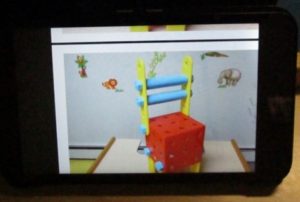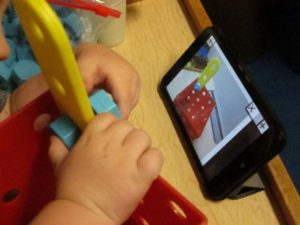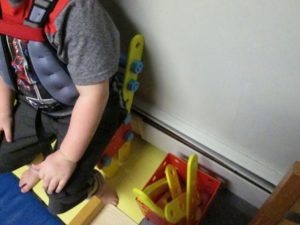Developing proficiency in hand function skills typically requires the support of two distinct sensory processing systems. While components of the visual processing system alert us to where and what the objects are that we will be working with, the sensory receptors in the joints, skin and muscles of the somatosensory system alert us to touch and movement sensations occurring as the objects are manipulated..
Many children who have sensory processing deficits have difficulty coordinating the muscles that move the eyes so that their ability to see and visualize exactly what part of an object needs to be touched. Even when they are able to talk about parts of the object to be manipulated, they may have difficulty determining exactly where that specific part is located on the object.
Reinforcing visual input by combining touch and movement is a common sensory strategy used by therapists to teach hand function skills. Using this strategy within a developmental framework would include the following main ideas:
1.Provide an age appropriate visual image of what is needed. Since this child will be building a toy, a photo of the completed project has been set up on a tablet. This allows the image to be stretched to emphasize key elements of the construction.

2. Modify the size of the toy selected so that the moveable parts will provide stretch to the fingers. The size of the manipulatives should result in stimulating sensory receptors in the skin, joints, and muscles in a natural way (without prompts) as the project is assembled.

3. Select a project that offers 3 dimensional characteristics so that the child can learn to visualize tangible objects. This will encourage hand movements in, around, on top of and under the assembly.

4. Plan to ask simple questions to prompt appropriate use of labels for parts of the assembly and where those parts should go. What part will be next ? Where will it go? What happens when we are finished?



Comments are closed.